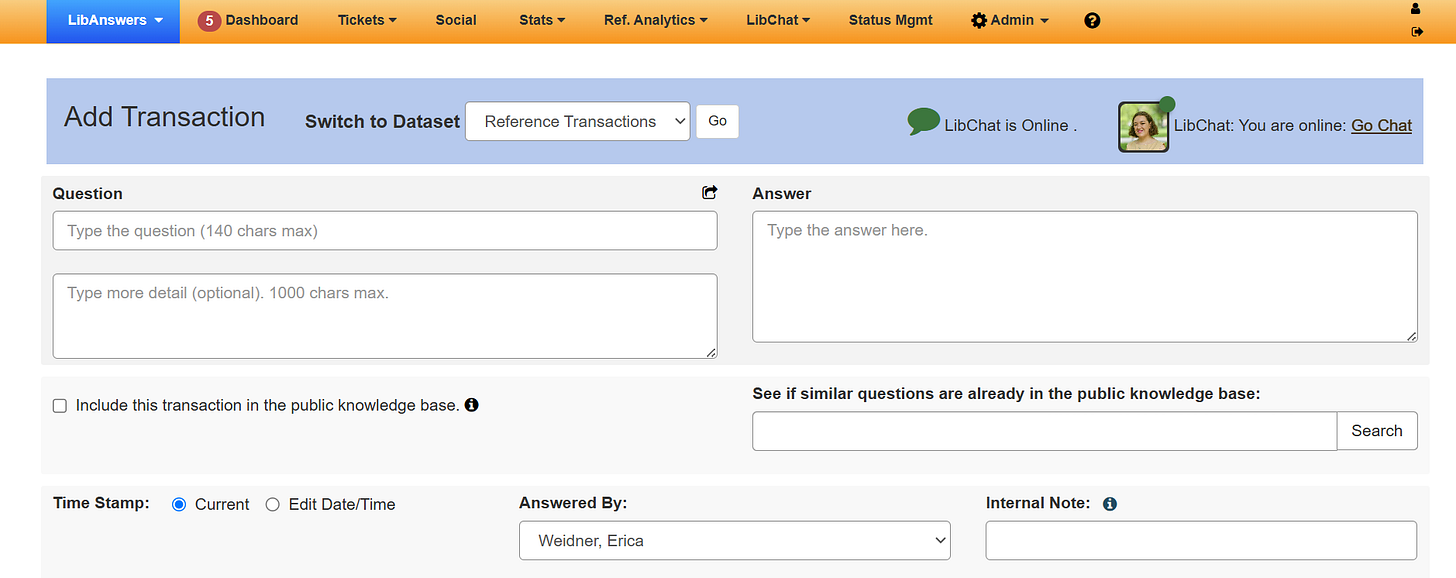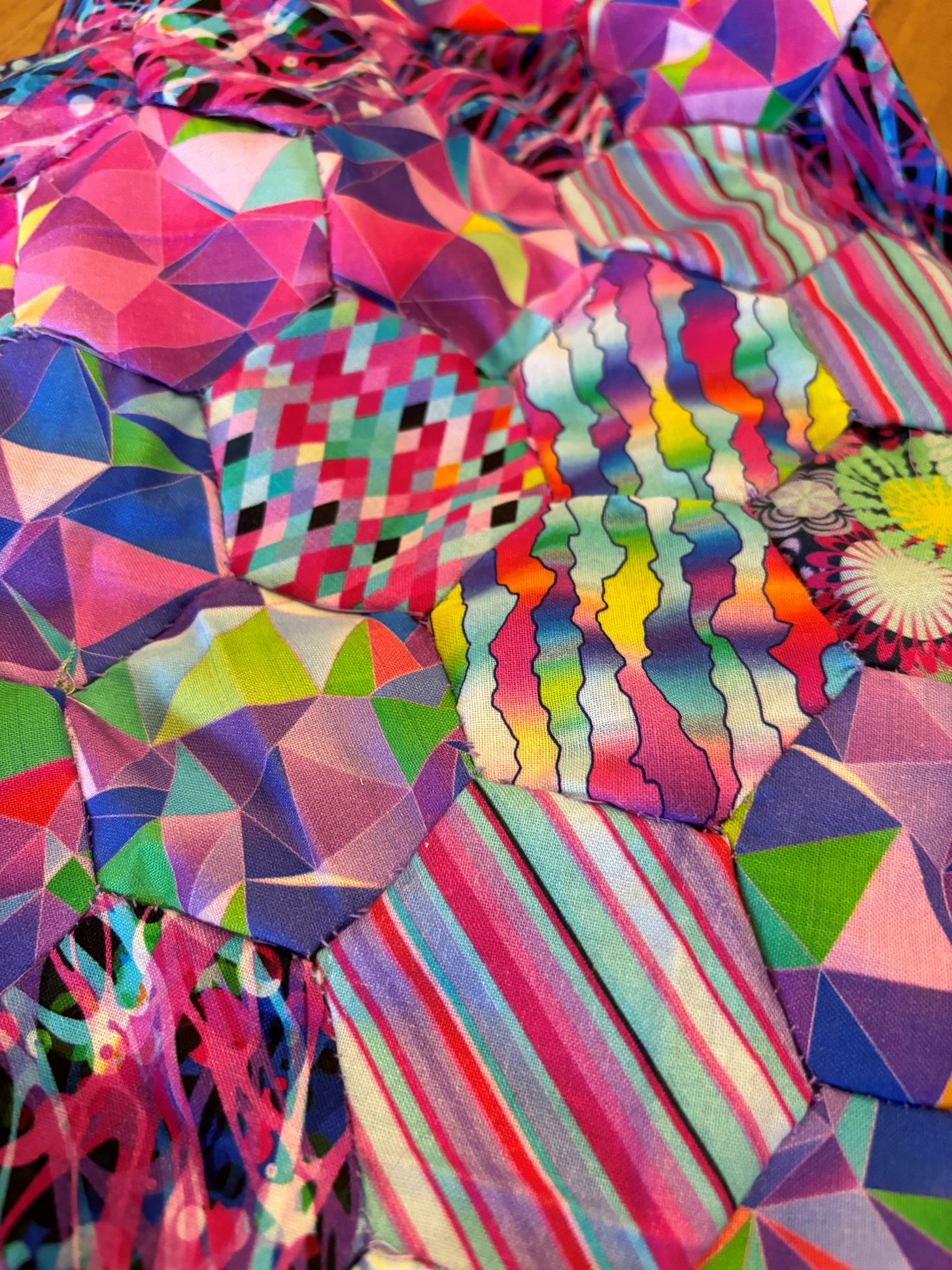Quilt Qrazy
I am creating a data visualization quilt of every reference transaction from Fall 2024.
So I’m working on a quilting project, which has lain dormant for a little while due to poetry, work, and general life stuff. But, in short: I am creating a data visualization quilt of every reference transaction I had as a librarian over the Fall 2024 semester.
What’s a reference transaction, you ask? Any time someone approaches a librarian with a question, no matter how big or small, they are engaging in a reference transaction with that librarian. Transactions range from “how do I print a document?” to “can you help me find Open Educational Resources from the last 5 years focusing on human resources standards and practices in the United States?”
Librarians log these transactions, usually with fancy library software.
We do this for a few reasons. It’s a way to show what kind of questions we're receiving, as well as when and how we’re receiving them. It’s also a way to justify our existence to the upper echelons of administration at the universities we work for. The budget looms over academic libraries. If librarians can show how many people they help, they can justify remaining on the payroll.
This bothers me. I should clarify, because multiple things bother me, but right now I specifically mean that librarians collect and generate data for the purpose of “we should continue to exist.” And it bothers me that the data in question is anonymized, reduced to a statistic, and reported to a provost I’ve met exactly once over Zoom. The personal touch, the human part of reference, is scrubbed.
Enter critical making. I first encountered critical making through my friend, classmate, and collaborator Gabby Evergreen, who I met at Pratt Institute. In our second semester of our master’s, Gabby created a quilt that was also a map that was also a digital storytelling project, and I was mesmerized. At Pratt, I also had the privilege of meeting and studying under Claudia Berger. Over a year later, I attended a workshop led by Gabby, Claudia, and other cool folks at the Digital Humanities 2024 conference. It focused on #dhmakes, or the making-physical-stuff side of digital humanities. There, Claudia taught a table of us how to quilt using English paper piecing. And the idea for this project began to form.
What is this project? This project is taking every reference transaction I had last semester, categorizing it, matching that category with a fabric pattern, and quilting together those patterned pieces of fabric into a physical object: a data quilt.
The patterns are colorful and geometric and loud, and the quilt is not going to look beautiful or cohesive.
Data is messy, and reference work is messy, and I want to embrace that. I want it to look as chaotic as the ref desk does.
Before I go on, I should mention I am doing this project by hand. I do not own a sewing machine and I don’t intend to purchase one. And, well—I have a lot of data points to stitch together.
200 data points, in fact.
200 reference transactions.
200 paper and fabric hexagons.
I’ve quilted137 out of 200 so far. To me, that is a victory—quilting over half of my reference transactions, all while working full-time, teaching, commuting, writing, editing, living. I’ve only got 63 to go now. Wish me luck?






Hell yeah!! I’m so excited to see how this project turns out. I love this term—critical making.